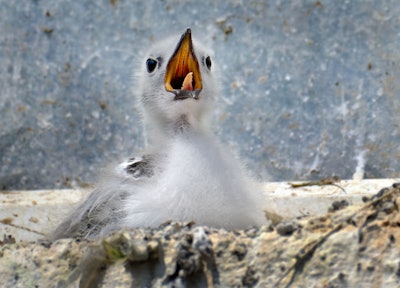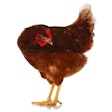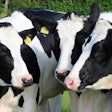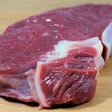
As wild birds are the main source of infection with highly pathogenic avian influenza (HPAI) in domestic birds, the ongoing and widespread mortality of seabirds so far this summer is a concern for Europe’s commercial poultry sector. Furthermore, the virus is increasingly being detected in animals other than birds, including at Finnish fur farms. One Russian region has recorded its first ever HPAI outbreak at a poultry farm, and cases have been detected for the first time in several months in a commercial flock in the Netherlands.
The latest countries reporting a sharp uptick in HPAI infections are those in Scandinavia.
While poultry flocks have not been particularly affected by the spike in new cases, the wild bird population is being heavily impacted in northern Norway. In Finland, the disease has hit the fur farming sector.
According to an official report, 12,000 wild bird carcasses had been collected over a period of 14 days. The notification to the World Organisation for Animal Health (WOAH) mentions that these were all an endangered seabird species, kittiwakes. They were found in two municipalities in the northern county of Troms and Finnemark.
While stressing that the threat to human health is low, the Norwegian food safety authority is urging people to avoid the area, and not to handle dead or sick birds. It reports that the elevated mortality began in early June.
Continued spread of HPAI virus across Europe
Over a two-week period up to July 22, 18 European states officially recorded one or more cases of HPAI in their respective wild bird populations.
Up to that date, 3,055 outbreaks had been registered in 27 states of the European Union (EU) and its neighbors. This is according to the Animal Disease Information System by the European Commission (EC). The figure increased by 174 compared with the previous update dated July 8.
For comparison, 33 nations registered a total of 3,245 outbreaks in wild birds with the EC’s system during the whole of 2022. This year, there has been no decline in HPAI cases in these populations during the summer months, in contrast to the pattern observed previously
Germany continues to be the state with the most outbreaks (994 for the year to date). Next come France (379), the Netherlands (344), Italy (191), and Belgium (186).
For each of these countries, the total has risen since the EC’s update from the previous week. Also registering more cases over this period were the Czech Republic (Czechia), Denmark, Estonia, Finland, Hungary, the Irish Republic, Latvia, Northern Ireland, Norway, Poland, Spain, Sweden, and Switzerland.
In some cases, these individual outbreaks cover mass mortalities in wild birds. For example, a recent WOAH notification from France includes more than 4,200 terns.
Not covered by the EC system is Russia, from where the first case of HPAI linked to the H5N1 virus serotype has been confirmed in Leningrad oblast. Found to be infected was a single dead gulls in this region of the Northwestern federal district.
Meanwhile, the veterinary authority in the United Kingdom (U.K.) has informed WOAH about a further 239 individual infections in wild birds. The same virus variant was detected in these cases found across the country, although mainly in mainland Scotland and the northern isles.
Further poultry outbreaks in Russia, Netherlands
Affecting the highest number of poultry in Europe recently is an outbreak in the Vologda region of Russia.
A first ever outbreak linked to the H5N1 virus serotype began in this region in the Northwestern federal district in late July.
According to the WOAH notification, the outbreak directly impacted 490,644 poultry at the commercial premises. Of these, mortality exceeded 27,000, while the fate of the rest of the flock has not been reported.
In the Netherlands, the HPAI situation in poultry was declared closed in early May. However, the H5N1 virus resurfaced at the end of July, according to the Dutch agriculture ministry. It reports that around 11,000 organic laying hens were scheduled for culling at the farm. The affected premises is located in Biddinghuizen in the central Dutch province of Flevoland.
At the start of July, the authorities in the Netherlands withdrew an order for mandatory housing of poultry across most of the country. The outbreak occurred in an area where poultry were not required to be kept indoors, the ministry noted.
Meanwhile, WOAH reports reveal further details of previously reported H5N1 outbreaks in Italy and the U.K.
For the most recently reported Italian outbreak, the number of affected birds has been increased by 600 to 1,000. Kept at the premises in Lombardy were pheasants for commercial purposes. This was the 11th outbreak on a farm in Italy in 2023.
In the U.K., the latest outbreak — also linked to the H5N1 virus serotype — involved a mixed flock of just over 3,300 birds in the southeast English county of Kent.
HPAI situation in European poultry flocks
Since the start of this year, there have been 384 outbreaks of HPAI in commercial poultry, according to the EC's System (as of July 27).
These were in 21 European Union (EU) member states and neighboring countries, including two outbreaks in Turkey (Tűrkiye). For the first time in 2023, an outbreak has occurred in the French overseas territory of Reunion, located in the western Indian Ocean.
Of the total, the country with the most outbreaks — now with 152 — is France. Next come Hungary (79 outbreaks to date), Poland (60), Germany (25), and Poland (24).
For comparison, 24 nations registered a total of 2,321 outbreaks in poultry through this system during 2022.
So far in 2023, 13 countries have together registered a total of 87 outbreaks of HPAI in captive birds through the EC’s system. This total — covering backyard poultry, zoos and similar premises — has increased by just one since the end of June.
Recording the most outbreaks in captive birds has been France (now with a total of 30), according to the EC’s System. Following are Germany (29), and Belgium (11). Each of the other 10 nations in the regions has registered between and four outbreaks in this category.
With the exception of Northern Ireland, the disease situation in the U.K. is not monitored by the EC.
In the second week of July, there was an HPAI outbreak in a small group of gulls kept captive in Peterhead in Scotland.
Finland, Norway: new cases in mammals
At Finnish fur farms, further infections with the H5N1 HPAI virus have been reported to WOAH.
Affected have been more American mink, Arctic foxes, and the first cases in raccoon dogs at 10 further locations.
Now with a total of 19 premises affected, these are located broadly in two clusters around 50km apart in the Western and Inland Finland region. Total mortality has reached 67 animals.
Meanwhile, the Norwegian authority has notified WOAH about the country’s first infection with the same virus serotype in an unusual host.
At the end of June, a wild red fox found dead near Tromso in the north of the country tested positive for H5N1.
View our continuing coverage of the global avian influenza situation.


















